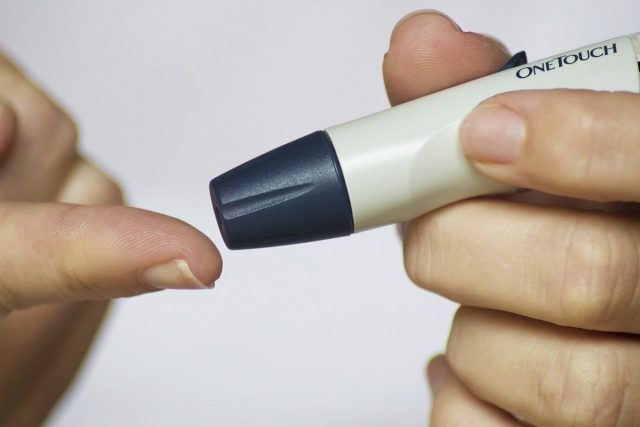Diabetes in Women – Types and Symptoms
Diabetes is a disease in which blood sugar (glucose) levels in your body are too high. Diabetes can cause serious health problems, including heart attack or stroke, blindness, problems during pregnancy, and kidney failure. About 15 million women in the United States have diabetes, or about 1 in every 9 adult women.1
What is diabetes?
Diabetes is a disease caused by high levels of blood sugar (glucose) in your body. This can happen when your body does not make insulin or does not use insulin correctly.
Insulin is a hormone made in the pancreas, an organ near your stomach. Insulin helps the glucose from food get into your body’s cells for energy. If your body does not make enough insulin, or your body does not use the insulin correctly, the glucose stays and builds up in your blood.
Over time, this extra glucose can lead to prediabetes or diabetes. Diabetes puts you at risk for other serious and life-threatening health problems, such as heart disease, stroke, blindness, and kidney damage.
What are the different types of diabetes?
The three main types of diabetes are:
- Type 1 diabetes. Type 1 diabetes is an autoimmune disease, meaning the body’s immune (defense) system attacks and destroys the cells in the pancreas that make insulin. If you have type 1 diabetes, your body does not make insulin, so you must take insulin every day.
- Type 2 diabetes. This is the most common type of diabetes. You can get type 2 diabetes at any age, even during childhood. With type 2 diabetes, your body does not make enough insulin or is not able to use its own insulin correctly. When this happens, blood glucose levels rise.
- Gestational diabetes. Gestational diabetes is a type of diabetes that happens only during pregnancy. Gestational diabetes can cause health problems for the baby and the mother if not controlled. Although gestational diabetes goes away after your baby is born, having diabetes during pregnancy raises your risk for type 2 diabetes later on.2 Learn more about gestational diabetes at the National Diabetes Information Clearinghouse.
Am I at risk for diabetes?
A risk factor is something that puts you at a higher risk for a disease compared to the average person.
Risk factors for type 1 diabetes in women and girls include:
- Age: It often develops in childhood.
- Family health history: Having a parent or brother or sister with type 1 diabetes
- Certain viral infections or illnesses, such as coxsackie virus B (a common cause of hand, foot, and mouth disease), rotavirus (also called stomach flu), and mumps3
- Where you live: It is more common in people who live in colder climates.
Risk factors for type 2 diabetes in women and girls include:4
- Overweight or obesity: Body mass index (BMI) of 25 or higher for adults. Find out your BMI. Children and teens weighing above the 85th percentile based on their BMI are at risk for type 2 diabetes. Find BMI charts for children and teens.
- Older age: 45 or older. After menopause, women are at higher risk for weight gain, especially more weight around the waist, which raises the risk for type 2 diabetes.
- Family health history: Having a mother, father, brother, or sister with diabetes
- Race/ethnicity: Family background of African-American, American Indian/Alaska Native, Hispanic, Asian-American, and Native Hawaiian/Pacific Islander
- Having a baby that weighed 9 pounds or more at birth
- Having diabetes during pregnancy (gestational diabetes)
- High blood pressure: Taking medicine for high blood pressure or having a blood pressure of 140/90 mmHg or higher. (Both numbers are important. If one or both numbers are usually high, you have high blood pressure.)
- High cholesterol: HDL cholesterol of 35 mg/dL or lower and triglycerides of 250 mg/dL or higher
- Lack of physical activity: Women who are active less than three times a week
- Having polycystic ovary syndrome (PCOS)
- Personal history of heart disease or stroke
If you have any of these risk factors, talk to your doctor about ways to lower your risk for diabetes. You can also take the Diabetes Risk Test and talk about the results with your doctor.
Who gets diabetes?
Type 1 diabetes usually develops in children and young adults, but it can happen at any age.5 It is more common in non-Hispanic whites and non-Hispanic blacks than in Hispanic populations.6 About 5% of people with diabetes have type 1 diabetes.1 If you have a parent or sibling with the disease you may be more likely to develop type 1 diabetes.
Type 2 diabetes is more common in adults, especially in people who are 45 and older, have a family history of diabetes, or have overweight or obesity. About 90–95% of people with diabetes have type 2 diabetes. Type 2 diabetes is becoming more common in children and teens, which may be because more of them have overweight and obesity.7,8,9
Do women of color need to worry about diabetes?
Yes. It is more common for certain racial and ethnic groups to have diabetes. This affects women who are:
- American Indian/Alaska Native. American Indian/Alaska Native women have the highest rate of diabetes among all racial and ethnic groups in the United States. It is more than twice as common for American Indian/Alaska Native women to be diagnosed with diabetes compared to white women. But rates of diabetes are different in different regions of the United States. Rates are lowest in Alaska Native people and highest in people who are American Indian and live in certain areas of the Southwest.1
- Black. Diabetes is almost twice as common in non-Hispanic black women compared to non-Hispanic white women.1
- Hispanic. It is more common for Hispanic women than non-Hispanic white women to be diagnosed with diabetes. Among Hispanic women in the United States, it may be more or less common for women of different heritage groups to be diagnosed with diabetes.1 For example, Mexican-American women have almost twice the rate of diabetes diagnosis compared to white women. But Cuban-American women have a lower rate compared to white women.1
- Asian. Diabetes is the fifth-leading cause of death for Asian or Pacific Islander women in the United States.10 However, it may be more or less common for women of different Asian heritage groups to be diagnosed with diabetes. One in every 33 Chinese-American women is diagnosed with diabetes compared to 1 in every 10 Asian Indian women.1 It is also more common for Asian women to develop gestational diabetes compared to white women.11
How does diabetes affect women differently than men?
Diabetes affects women and men in almost equal numbers. However, diabetes affects women differently than men.
Compared with men with diabetes, women with diabetes have:12
- A higher risk for heart disease. Heart disease is the most common complication of diabetes. Learn more about the link between heart disease and stroke and diabetes in women
- Lower survival rates and a poorer quality of life after heart attack
- A higher risk for blindness
- A higher risk for depression. Depression, which affects twice as many women as men, also raises the risk for diabetes in women.13
Does diabetes raise my risk for other health problems?
Yes. The longer you have type 2 diabetes, the higher your risk for developing serious medical problems from diabetes. Also, if you smoke and have diabetes, you are even more likely to develop serious medical problems from diabetes, compared with people who have diabetes and do not smoke.14
The extra glucose in the blood that leads to diabetes can damage your nerves and blood vessels. Nerve damage from diabetes can lead to pain or a permanent loss of feeling in your hands, feet, and other parts of your body.15
Blood vessel damage from diabetes can also lead to:
- Heart disease
- Stroke
- Blindness
- Kidney failure
- Leg or foot amputation
- Hearing loss
Women with diabetes are also at higher risk for:
- Problems getting pregnant
- Problems during pregnancy, including possible health problems for you and your baby
- Repeated urinary and vaginal infections
What causes diabetes?
Researchers do not know the exact causes of type 1 and type 2 diabetes. Researchers do know that inheriting certain genes from your family can raise your risk for developing diabetes. Obesity is also a major risk factor for type 2 diabetes. Smoking can also cause type 2 diabetes. And the more you smoke the higher your risk for type 2 diabetes and other serious health problems if you already have diabetes.16
Weight loss can help control type 2 diabetes so that you are healthier. Quitting smoking can also help you control your blood sugar levels. Being a healthy weight and not smoking can help all women be healthier.
But, obesity and smoking do not always cause diabetes. Some women who are overweight or obese or smoke never develop diabetes. Also, women who are a normal weight or only slightly overweight can develop diabetes if they have other risk factors, such as a family history of diabetes.
What are the signs and symptoms of diabetes?
Type 1 diabetes symptoms are usually more severe and may develop suddenly.
Type 2 diabetes may not cause any signs or symptoms at first. Symptoms can develop slowly over time. You may not notice them right away.
Common signs and symptoms of type 1 and type 2 diabetes include:
- Feeling more tired than usual
- Extreme thirst
- Urinating more than usual
- Blurry vision
- Feeling hungrier than usual
- Losing weight without trying
- Sores that are slow to heal
- Dry, itchy skin
- Tingling in the hands or feet
- More infections, such as urinary tract infections and vaginal yeast infections, than usual



